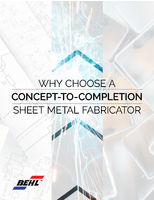Branson Introduces its New Line of Rotary Indexed Thermal Welding Systems
Share:

Danbury, CT, February, 2009 -- Branson Ultrasonics Corporation introduced its newest
line of Rotary Indexed (RI) thermal welding systems which give manufacturers increased
productivity and throughput for this assembly process. The Branson RI 201, 301 and 401
series welders integrates a two position rotary table with Branson's standard thermal welders and are used for staking, swaging, insertion, degating, and date stamping.
Product Features and Benefits
o Two position rotary indexing table
o Increased throughput
o Cost effective
o Interchangeable tooling
o Easy load and unloading of parts
How does thermal welding work?
Thermal Staking
In thermal staking, also referred to as "heat staking, heading or riveting," the controlled flow of the molten plastic is used to capture or retain another component, joining plastic to plastic or metal or another type of material (e.g., printed circuit board). This process can be used as an alternative to welding when the two parts to be assembled consist of dissimilar materials which cannot be welded or when simple mechanical retention of one part relative to another is adequate (as opposed to molecular bonding).
The most commonly used application involves the attachment of metal to plastic. A hole in the metal part receives a premolded plastic boss. The thermal tip contacts the boss and creates localized heat. As the boss melts, the light pressure from the tip forms a head to a shape determined by the tip configuration. When the heat source retracts, the plastic material solidifies and the dissimilar materials are fastened together. It is the progressive melting of the plastic boss under continuous light pressure that forms the head. When staking, low pressure rather than high pressure is usually recommended.
Benefits of thermal staking / swaging
o Excellent aesthetics
o Does not cause damage to fragile electronic or other sensitive components
o Minimal tool wear
o No flash or particulate matter created
o Extremely tight stakes created with our proven methods
o Any thermoplastic material easily staked/swaged
o Can stake one or multiple stakes on multiple planes simultaneously
o No cracking, splitting, breaking, or stresses applied to boss
Thermal Insertion
In thermal insertion a metal insert is placed in a cored or drilled hole, which is slightly smaller than the insert. This hole provides a certain degree of interference and also serves to guide the insert into place. The heat from the thermal tip travels through the insert to the interface of the metal and plastic. Heat generated by the thermal tip causes the plastic to melt, and as the thermal tip advances, the insert is imbedded into the component. The molten plastic flows into the serrations, flutes, or undercuts of the insert, and when the heat source retracts, the plastic resolidifies and the insert is securely encapsulated in place.
Inserts that can be installed by thermal insertion include a variety of bushings, terminals, ferrules, hubs, pivots, retainers, feed-through fittings, fasteners, hinge plates, binding posts, handle-locating pins and decorative attachments.
Benefits of thermal insertion
o Multiple inserts at different levels can be accomplished simultaneously with a
thermal unit
o Practically no limit on quantity, size, or plane of the inserts
o Different sized inserts can be driven simultaneously with a thermal unit
o Larger inserts or more inserts can be driven with one cycle of a thermal press than with an ultrasonic welder
o No material limitations. Inserting into filled material can be accomplished with less
damage to the inserts with a thermal unit
o Process does not produce metal flakes, chips or dust
o Minimal tool wear
o Quiet operation



